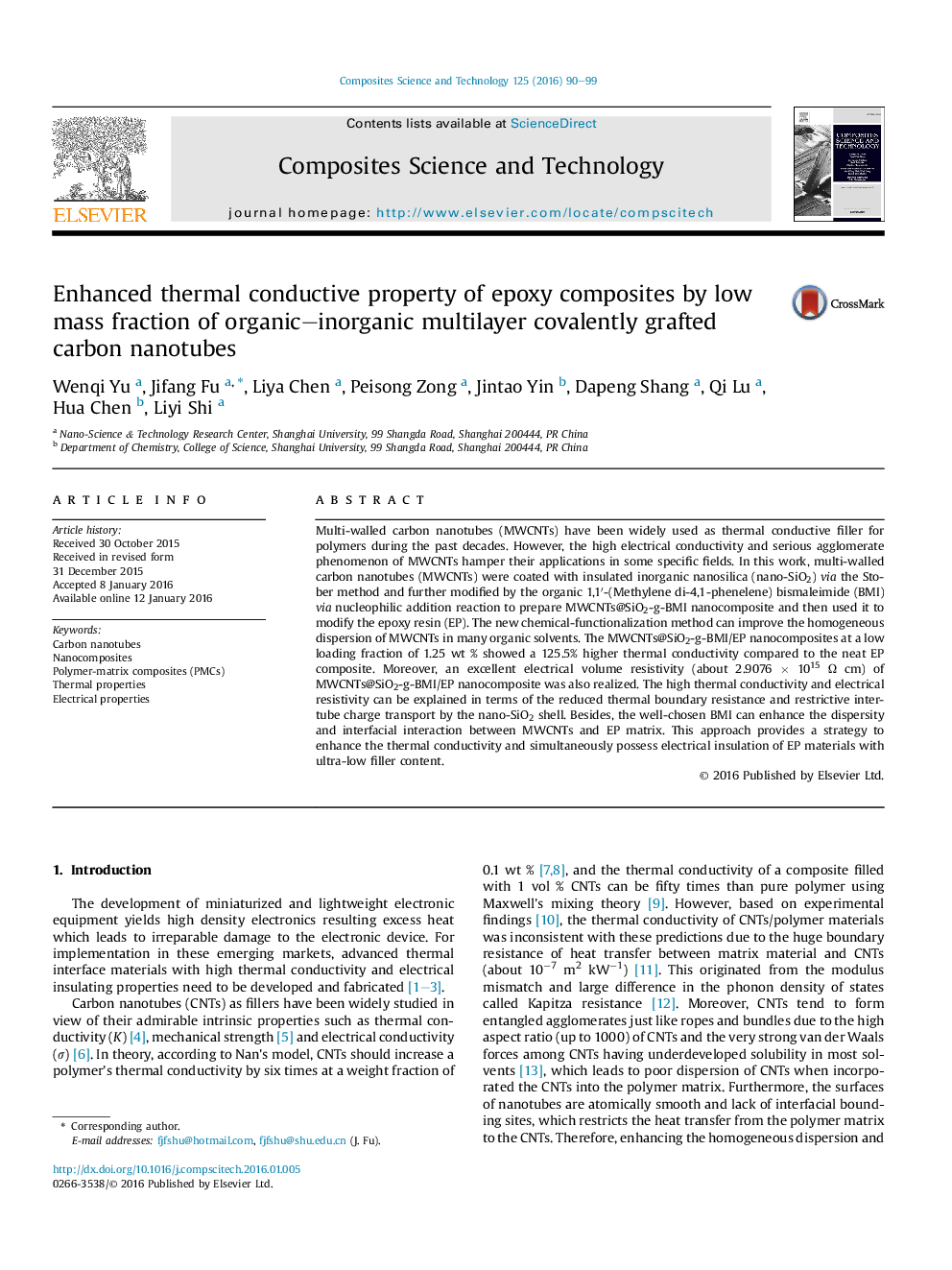| Article ID | Journal | Published Year | Pages | File Type |
|---|---|---|---|---|
| 819977 | Composites Science and Technology | 2016 | 10 Pages |
Multi-walled carbon nanotubes (MWCNTs) have been widely used as thermal conductive filler for polymers during the past decades. However, the high electrical conductivity and serious agglomerate phenomenon of MWCNTs hamper their applications in some specific fields. In this work, multi-walled carbon nanotubes (MWCNTs) were coated with insulated inorganic nanosilica (nano-SiO2) via the Stober method and further modified by the organic 1,1′-(Methylene di-4,1-phenelene) bismaleimide (BMI) via nucleophilic addition reaction to prepare MWCNTs@SiO2-g-BMI nanocomposite and then used it to modify the epoxy resin (EP). The new chemical-functionalization method can improve the homogeneous dispersion of MWCNTs in many organic solvents. The MWCNTs@SiO2-g-BMI/EP nanocomposites at a low loading fraction of 1.25 wt % showed a 125.5% higher thermal conductivity compared to the neat EP composite. Moreover, an excellent electrical volume resistivity (about 2.9076 × 1015 Ω cm) of MWCNTs@SiO2-g-BMI/EP nanocomposite was also realized. The high thermal conductivity and electrical resistivity can be explained in terms of the reduced thermal boundary resistance and restrictive inter-tube charge transport by the nano-SiO2 shell. Besides, the well-chosen BMI can enhance the dispersity and interfacial interaction between MWCNTs and EP matrix. This approach provides a strategy to enhance the thermal conductivity and simultaneously possess electrical insulation of EP materials with ultra-low filler content.
